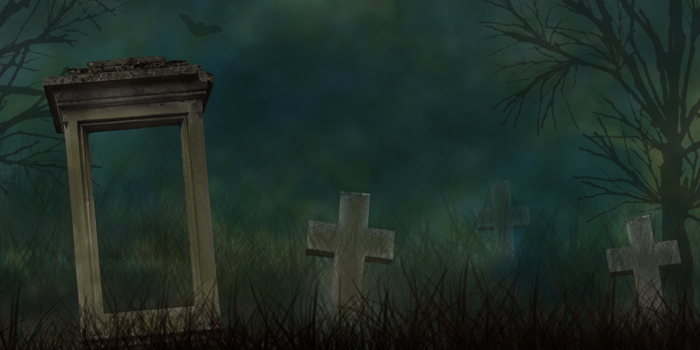
Last year I focused on the destruction of our demons- it is time to bury them. To close the chapter, and begin a new one.
I didn't believe in the ability to actually close the door on traumatic experiences until very recently. Personally, the demons I struggle most with putting in the earth revolve around adversities that occurred during my youth, and further formative years. Most anything in my adulthood has been comparatively easier to bury; and bury is not expressed in the negative sense of outright ignoring the problem, sweeping it under the rug, to only trip over it later. In the context of mental health, “bury” expresses the ability to put that crucible six-feet under, slam a headstone on it, and go forth to enjoy your life. In sum, I posit that what we deal with in adulthood is far easier to cognize, compartmentalize, and consequently bury than what we have been exposed to as adolescents. However, it is not the intent of this article to incite a debate about nature vs. nurture. It is my hope that the following can be an adjunct to other remedies you are utilizing to avert the disastrous effects of trauma. Most want to clean the slate so that we can live in the present for both ourselves and our loved ones. The past can rot us from the inside out, and physical activity, personal bests, straining under weight that doesn't foment the sympathetic nervous system, are potent methods I’ve utilized to battle the rot from OCD, Pure O, PTSD, Anxiety, and Depression.
PART 1: Mental May — Destroying Demons
Comprehending the fact that healing, truly healing to MOVE ON and be present, is easier said than done. The equation to successfully do so isn’t as complex. One of the most indispensable elements in healing is physical activity. Taking from the experiences of my students and myself, there is no other tool as helpful as the weight room. Therapy, medication, and weight lifting are vital constituents of the aggregate that various cures for mental illness form. These three variables form the almighty equation for treatment. It is important to illuminate the fact that these elements are often removed or added; however, they are all well known, and they do work. Perhaps you don't need medication, or you’ve been in therapy so long that you can auto-regulate thought processes, and can mitigate professional counsel. That is commendable. I’ve been on medication for eight years and began psychoanalytic therapy at ten. We are all different, and because of individuality, much like in weight lifting, we require different means to achieve the same end.
Yet, the one variable that is insusceptible to removal is weightlifting. It is pivotal. Its positive effects on the mind, the spirit, and the soul are unassailable. Depressed? Lift. Anxious? Lift.
The only caveat is intensity. If you are anxious, it may be advisable to stay away from a 1-rep max and attack your favorite muscle group for volume. Below you will find video demonstrations of a Giant Set for Grip, a Repeated Effort Set for Neck, and a Repeated Effort Romanian Deadlift set. All the aforementioned train my favorite movement patterns and musculature, giving me clarity of mind, sense of accomplishment (which is fuel for contentment), allowing me to leave the gym in a mental state that allows me to detach from the emotional content of a prior trauma, and objectively begin to bury it. Essentially, when you are at your worst, go to the gym and have fun. You don't need to max out or even set a personal best in anything at all. Anything you endeavor to do during these trying times, stay parasympathetic dominant.
Grip Giant Set for Jiu-Jitsu (Advanced):
Neck Bridges x108:
315-pound Snatch-Grip Romanian Deadlifts:
Lifting while depressed is an entirely different animal. Nevertheless, it MUST happen regardless of how awful you’re feeling. Monitoring intensity is again a priority. A 1-rep max may be ill-advised, as the emotional stir one must cause to reach a new personal best is often too potent to help abate the symptoms you’re experiencing. If that is the case, set a new rep-max personal best within the 5-10 rep ranges. Repetition maximums for a personal best, volume for my favorite muscle groups, and my favorite exercises are all means by which I rely on to accomplish a goal, enhance positive emotions, and stay the course. Deviation from action leads to stagnation, and if you want to keep moving forward mentally, you have to physically do the same incessantly.
The month of May is not only for us to realize we are part of a community unto ourselves; it is a reaffirmation that we are part of something bigger than ourselves. We find that others experience the same, which can engender sentiments of belonging, helping us heal. And in belonging, we find pride. So do not be ashamed of that which you suffer through, but rather be proud of your affliction, as it takes more than others know to not just suffer through, but to rise high from the ashes. It’s Mental May, so bury those demons.
Header image courtesy of loraliu © 123rf.com
If you or a loved one is at risk for suicide or needs help, reach out to these resources. All hotlines listed below are available 24/7 and are confidential unless otherwise noted. In case of an emergency, call your local authorities.
- The National Suicide Prevention Lifeline (US): 1-800-273-8255
- Crisis Text Line (US): Text "START" to 741741
- National Domestic Violence Hotline (US): 1-800-799-7233
- Veterans Crisis Line (US): 1-800-273-8255, press 1
- Rape, Abuse and Incest National Network/RAINN (US): 1-800-656-4673
- The Trevor Project (US crisis intervention for LGBTQ+ youth): 1-866-488-7386, text "START" to 678678, or instant message a counselor at thetrevorproject.org/get-help-
now - TWLOHA (US): Text "TWLOHA" to 741741
- Free online chat-counseling and therapy from trained volunteers (international): 7cups.com
- International lists of suicide hotlines and resources: suicide.org/international-
suicide-hotlines.html and twlo ha.com/find-help/ international-resources
Max Barnhart, MA, CSCS, has been involved in collegiate strength and conditioning at the NCAA Division I level for eight years. In addition to coaching, Max has been fortunate enough to publish two articles in NSCA publications and to conduct his master’s thesis on the reduction of the bilateral deficit and concomitant effects on extroversion and personality type. Max’s true passion is the optimization of student-athletes’ athletic and personal potential through strength training and through raising mental health awareness among such populations.











3 Comments